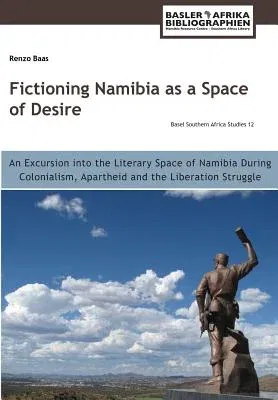Renzo Baas
(Author)Fictioning Namibia as a Space of Desire: An Excursion into the Literary Space of Namibia During Colonialism, Apartheid and the Liberation StrugglePaperback, 22 February 2019

Qty
1
Turbo
Ships in 2 - 3 days
In Stock
Free Delivery
Cash on Delivery
15 Days
Free Returns
Secure Checkout
Print Length
296 pages
Language
English
Publisher
Basler Afrika Bibliographien
Date Published
22 Feb 2019
ISBN-10
3906927083
ISBN-13
9783906927084
Description
Product Details
Author:
Book Format:
Paperback
Country of Origin:
US
Date Published:
22 February 2019
Dimensions:
24.41 x
16.99 x
1.57 cm
ISBN-10:
3906927083
ISBN-13:
9783906927084
Language:
English
Pages:
296
Publisher:
Weight:
476.27 gm

